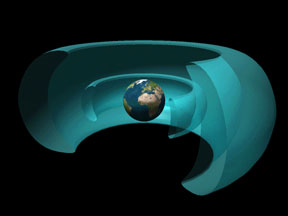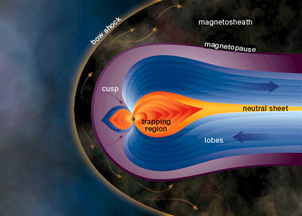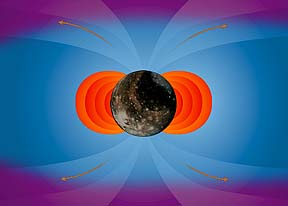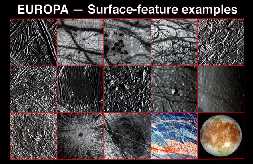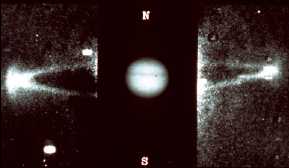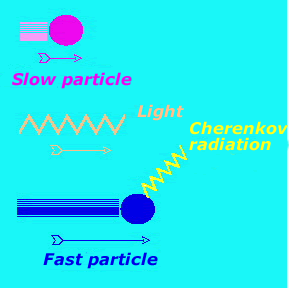
A schematic view of the Cherenkov effect.
Windows to the Universe original image
Windows to the Universe original image
Radiation
If you are sitting in the dentist's chair and they decide to X-ray your teeth, they put a big shield over you for protection. Why? Because they need to shield you from 'radiation'. Radiation comes in many forms. Radiation is another term for light, as in "ultraviolet radiation". Visible light, infrared, and X-rays are all other names for radiation at specific wavelengths. Radiation is also generated by charged particles, especially when they are moving very fast. One place in nature where electrons (one of the charged particles that make up an atom) can move very fast is inside a planet's magnetosphere. Earth, Jupiter, and even the little moon Ganymede, all are surrounded by belts of radiation called 'radiation belts', which are high above the surface, but still bound to the planet by the force of gravity. Radiation can kill you. Radiation can also have a pretty serious impact on hardware that gets exposed. The main reason radiation is harmful is that it causes little defects in material, from human skin to metals, and causes matter to break down. Radiation can also do good things, though, such as helping doctors to image your body and determine what if something is wrong. Radiation can even cause new molecules to form on the surface of Europa. A special kind of radiation, called Cherenkov radiation is illustrated in this drawing. The US Nuclear Regulatory Agency defines the maximum permissible annual dose for an adult member of the public as 0.1 REM. About 600 REM = certain death. For comparison, a spacecraft in Jupiter's extreme radiation environment is exposed to 45,000 REM's per hour.Last modified September 19, 2003 by Roberta Johnson.






